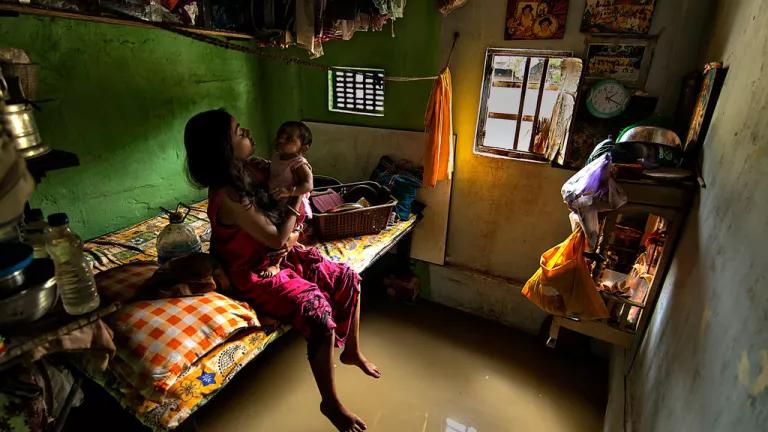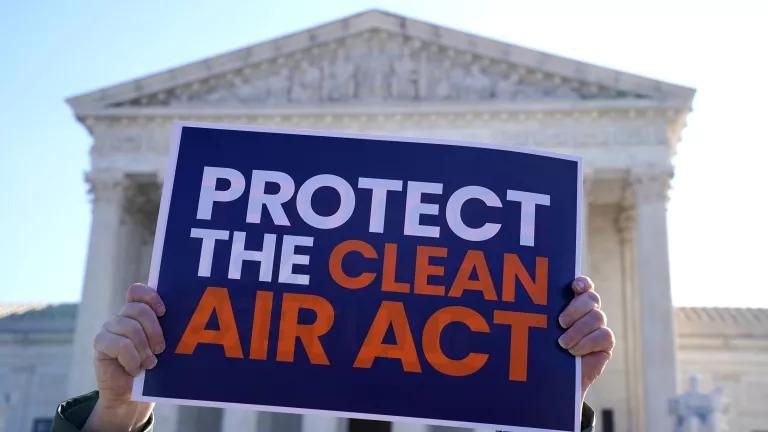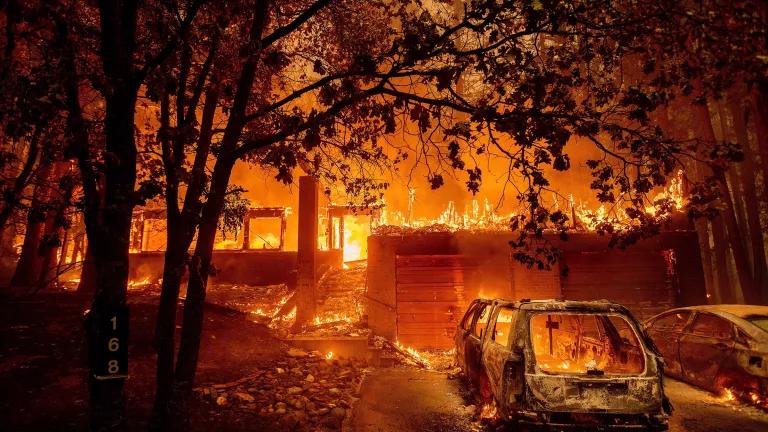Monster Heat Wave Harming Health in Pacific Northwest
Workers and other at risk populations need better protections from extreme heat.

“Hot Vax Summer” isn’t going well for people traveling to and around the Pacific Northwest this week. A monster heat wave has damaged roads and streetcar cables, stranded airline passengers, and closed restaurants and other businesses.
These heat-related disruptions are frustrating after more than a year of COVID-imposed distance from families, friends, adventures, and paychecks. But they’re also bad for our health. Extreme heat has sent more than 1,100 people to Washington and Oregon emergency rooms in the last few days—hundreds more than the regional average for an entire summer.
Workers who must choose between a paycheck and the risk of heat-related illness are among the most vulnerable to dangerously high temperatures. And although some employers seem to be living up to their legal responsibility to keep workers safe, others are actively incentivizing unhealthy behavior during record-shattering heat.
Examples of workers at risk include:
- Airline crews. Being stuck in a plane on a hot tarmac is neither fun nor healthy for passengers or crew members. But ground crews face even more severe conditions because they’re doing strenuous work out in the sun and around hot engines. Airlines have pointed to their efforts to keep workers safe as part of the reason for recent flight delays.
- Lifeguards and other parks and rec workers. A basic human instinct is to head for water during hot weather. As Portland Parks & Recreation learned this week, however, someone needs to protect the protectors. After heat sickened several lifeguards, the city made the tough call to temporarily close outdoor pools in the metro area.
- Food service workers. Air conditioning is far less common in the Pacific Northwest than in other parts of the country. As Senator Maria Cantwell put it, “Washington state was not built for triple digit temperatures.” That lack of A/C in some eateries and power outages at others has been brutal for kitchen workers scrambling to keep up with a rush of orders.
- Farmworkers. This Twitter thread from the United Farm Workers speaks for itself.
Urgent Need: Protect Workers from Heat
Workers in the United States are insufficiently protected from today’s heat, let alone the ragingly hot future conditions expected from fossil fuel-driven climate change. There are no federal standards specifically designed to keep workers safe from heat, and just three state-level standards.
Washington is the only state in the Pacific Northwest (not including California) with an occupational heat standard. However, the Washington standard doesn’t include rest and shade requirements, only covers outdoor workers, and is only in effect during what used to be considered the normal heat season. That’s no longer sufficient, given that the heat season is getting longer every decade.
Oregon is working on its own heat standard, but won’t have a draft proposal until at least the end of September. NRDC joined a coalition of more than 50 groups earlier this month calling on the Oregon Occupational Safety and Health Administration (OSHA) to issue emergency safeguards in the meantime. Relief can’t come too soon; one farmworker has already reportedly died of heat in Oregon’s Willamette Valley.
This patchwork of safeguards isn’t enough. As my colleague Dr. Teni Adewumi-Gunn recently wrote:
“Health and safety protection shouldn’t be dictated by geography. Outdoor and indoor workers alike need federal protections to help keep them safe from the effects of heat.”
Congress needs to pass the Asunción Valdivia Heat Illness and Fatality Prevention Act, which would direct the federal OSHA to develop an enforceable heat safety standard for indoor and outdoor workers alike.
Urgent Need: Protect Infrastructure from Heat
Another way to protect workers is to ensure our critical infrastructure can endure more extreme conditions. In Washington, road crews have had to put their health on the line to cool off bridges with hoses and repair cracked roads.
Congress can help put people to work before disaster strikes and reduce health risks during disasters by passing a robust infrastructure package and the American Jobs Plan. The American Jobs Plan also would help keep workers from historically excluded communities safe through investments in housing, transportation, and drinking water.
Urgent Need: Slash Climate Warming Pollution
Finally, it’s important to remember that while extreme heat events grab a lot of attention, the relentless upward creep of average temperatures also spells trouble for our health and our society. The fact is that everything has an upper temperature limit: from our building materials, to our crops, to our bodies.
In addition to doing everything we can to adapt to our current and future climate reality, we must tackle the root causes of climate change with ambition and haste. Every ton of carbon matters; every tenth of a degree matters.
Let’s get to work.



